When it comes to choosing the best electric guitar, you must consider the price of the instrument, as well as the material it’s made from.
In most cases, the body, neck, and fretboard are made of wood. But does the type of wood matter for an electric guitar?
The wood (known as tonewood) actually has a major impact on the guitar’s tone and sound!
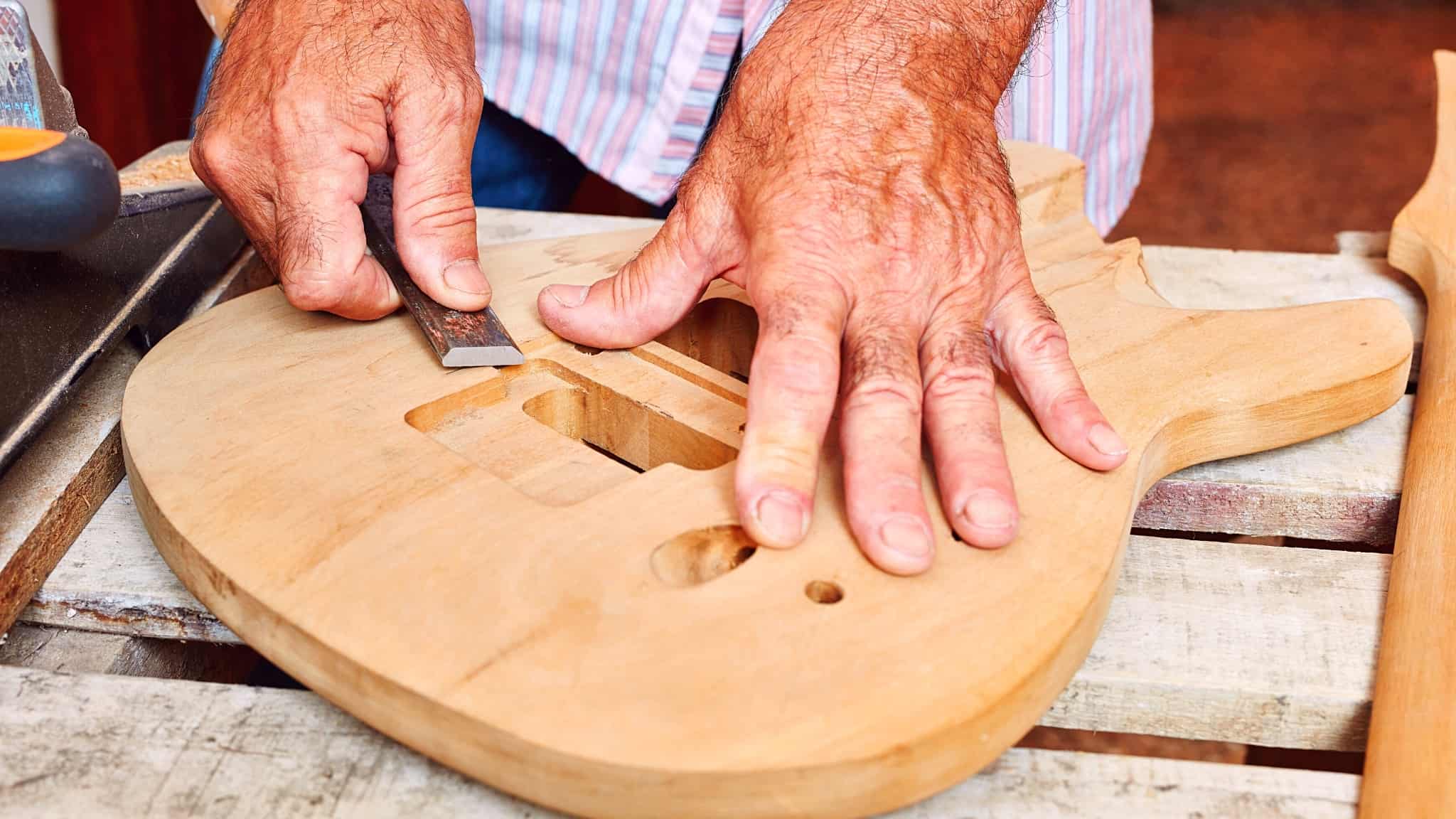
Luthiers use different woods for the instrument’s body and neck to achieve certain tonal sounds.
Not all woods are the same because they each sound different due to varying weights and densities. But the best woods for electric guitars are mahogany, alder, basswood, maple, koa, rosewood, ash, and walnut.
This post discusses why wood matters and how it affects tone, sound, and prices. Also, I’ll share the best wood for making the different electric guitar parts.
Electric guitar wood tone chart
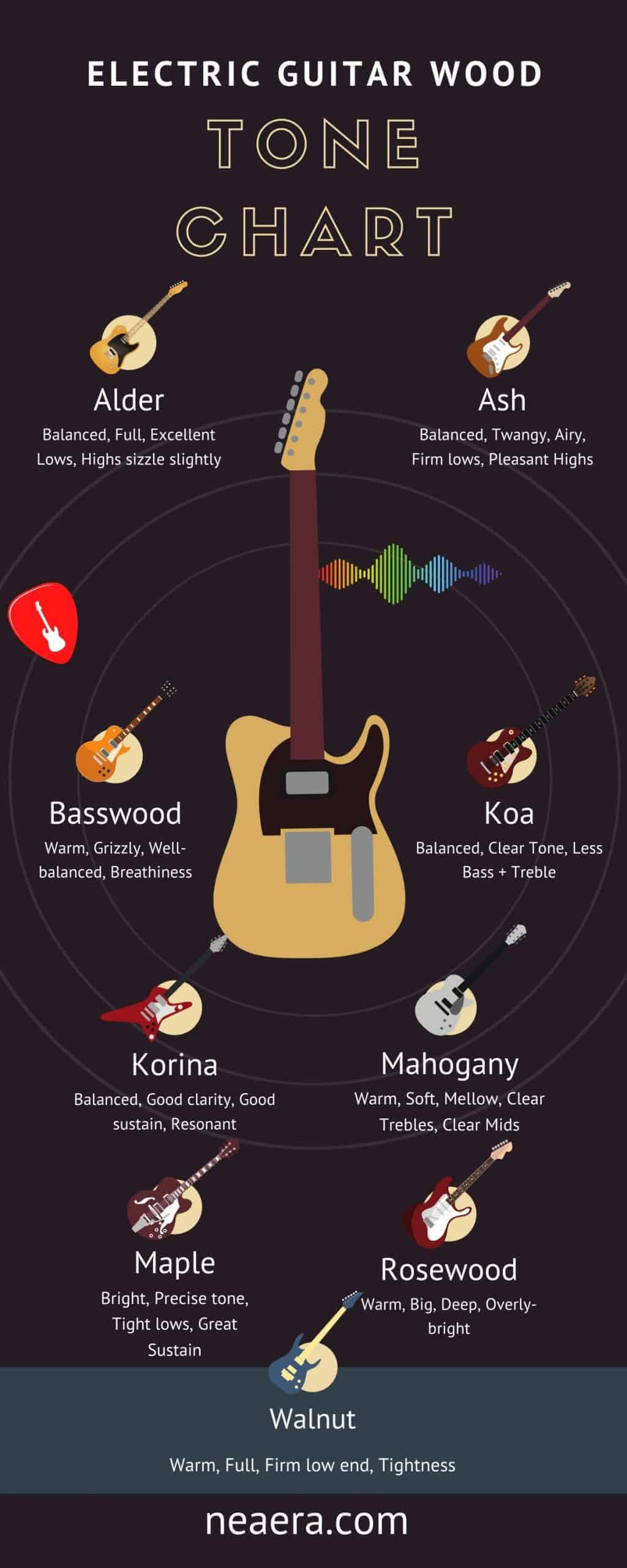
| Guitar tonewood | Tone |
| Best for a full-bodied punchy attack: Alder | Balanced, full, excellent lows, highs sizzle slightly |
| Bright sound and Fender twang: Ash | Balanced, twangy, airy, firm lows, pleasant highs |
| Best mids: Basswood | Warm, grizzly, well-balanced, breathiness |
| Balanced guitar tone: Koa | Balanced, clear tone, less bass + treble |
| Best resonance: Korina | Balanced, good clarity, good sustain, resonant |
| Best for (blues-rock) soloing: Mahogany | Warm, soft, mellow, clear trebles, clear mids |
| Tight sound for rock and metal: Maple | Bright, precise tone, tight lows, great sustain |
| Warm fretboard wood: Rosewood | Warm, big, deep, overly-bright |
| Most treble: Walnut | Warm, full, firm low end, tightness |
What makes different tonewoods sound different?
Wood is an organic material, which means it’s always changing and growing. As it ages, it develops deeper grains, and these grains can vary in size and shape.
This means that different types of wood have different imperfections, which is what gives them their unique sound.
Think of it like two different rooms. In a small room, the sound dies down quickly but is clear. In a large room, the sound echoes around more and lasts longer but loses clarity.
The same goes for the gaps between the grains in different types of wood: if the wood is dense, there’s less space for the sound to move around, so you get a bright, clear sound.
If the wood is less dense, the sound has more room to move around, resulting in a darker, more sustained sound.
Does wood matter for an electric guitar?
Although many people associate the acoustic guitar with wooden components, the electric guitar is also mostly made out of wood.
Wood matters because it directly influences the tone of the instrument. This is called tonewood, and it refers to specific woods that offer different tonal properties that affect your electric guitar’s sound.
Think of it like this: all woods have imperfections, depending on their age. The grains undergo constant change, which makes them sound different from each other.
The truth is that no 2 guitars sound exactly the same!
Density influences tone directly too. There’s less space between the grains and ultimately less space for the sound to move around in dense wood. As a result, the guitar has bright clarity and plenty of attack.
Less dense wood has more space between the grains. So the guitar offers a darker resonance and an increased sustain.
Now, I’m sharing a list of the best woods for electric guitars. Then, I’ll focus on the best wood combinations for the guitar’s neck.
It’s important to talk about the body and neck separately because not all woods are great for each part.
A luthier’s job is to figure out the best body and neck wood combination to create the specific sound the guitar is going for.
Related: How to tune an electric guitar.
Best wood for electric guitars
Best for a full-bodied punchy attack: Alder
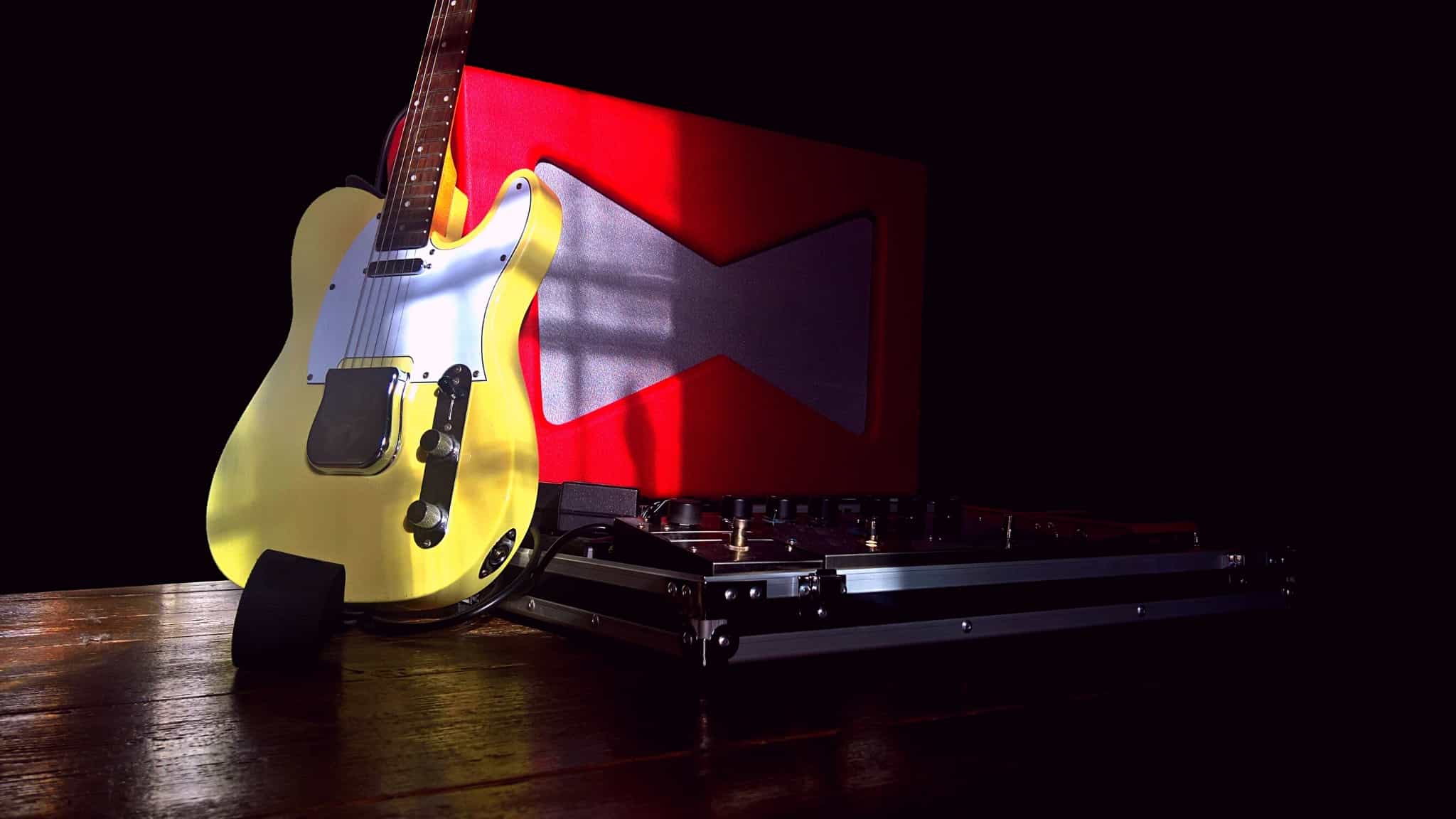
Since the ’50s, the alder body has been popular because Fender began to use this wood in their electric guitars.
This wood is versatile; therefore, it’s used for a variety of guitar types. It’s a relatively cheap wood used for solid body guitars, but it sounds great.
Alder is similar to basswood because it also has soft and tight pores.
It’s a very lightweight wood with a big swirling grain pattern. Swirl patterns matter because the large rings contribute to the strength and complexity of the guitar tones.
But alder isn’t as beautiful as other woods, so the guitars are usually painted over in various colors.
The alder body is known for its balanced tones because it offers lows, mids, and highs, and the sound is clear.
But alder doesn’t soften all the highs and instead, retains them while allowing the lows to really come through. So alder is known for its excellent lows.
As a result, alder wood allows for a much wider scope of tones. But you can perceive fewer mids than with basswood, for example.
Guitarists appreciate the clear, full-bodied sound and punchier attack.
Popular alder guitar model: Fender Telecaster HH

Bright sound and Fender twang: Ash
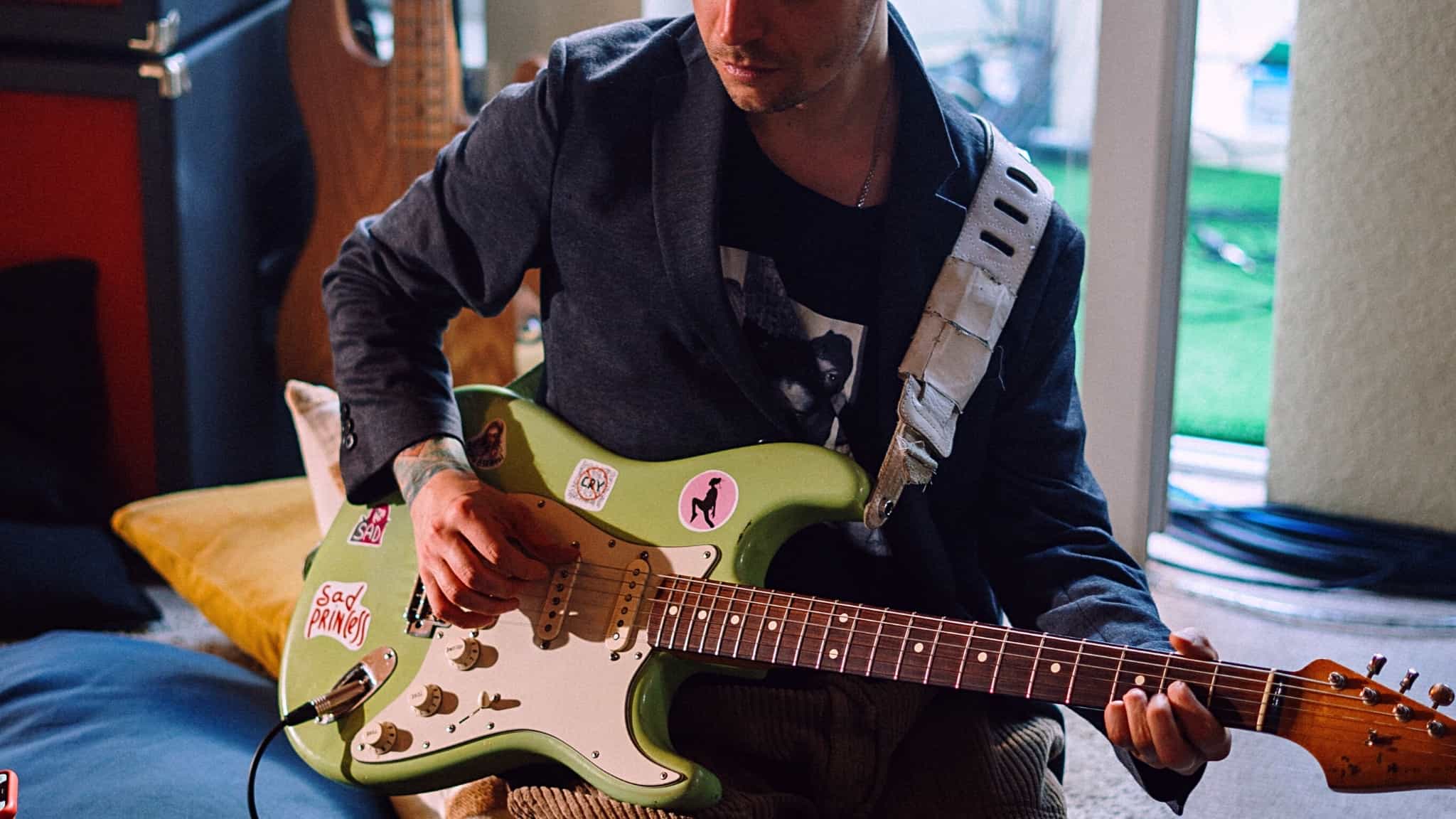
If you’re familiar with vintage Fender guitars from the 1950s, then you’ll notice that they’re made with ash.
There are 2 types of ash wood: hard (Northern ash) and soft (Southern ash).
The Fenders were manufactured with soft southern swamp ash, which gave them a much softer feel.
Although ash is less popular these days due to its high cost, it’s still the top choice for those who love the sound of Fender guitars . It’s a long-lasting guitar with exceptional qualities.
The manufacturing process takes longer because this type of wood has an open grain, which takes extra prep work. They have to fill in the grains at the factory with a lacquer of fillers in order to achieve that smooth surface.
Hard ash is very popular because it gives bright tones and resonates well.
It’s a long-lasting guitar with exceptional qualities. The sound is twangy, but also airy at the same time.
The ash tree’s upper part is denser and heavier, so it’s ideal for playing distorted tones. This wood offers lots of low ends and those striking highs.
A minor disadvantage is that the midrange is slightly scooped. But the bright tones are ideal for use with distortion pedals.
Players appreciate the sweet, bright sounds and the balanced tones of ash instruments.
Popular ssh guitar model: Fender American Deluxe Stratocasters

Best mids: Basswood
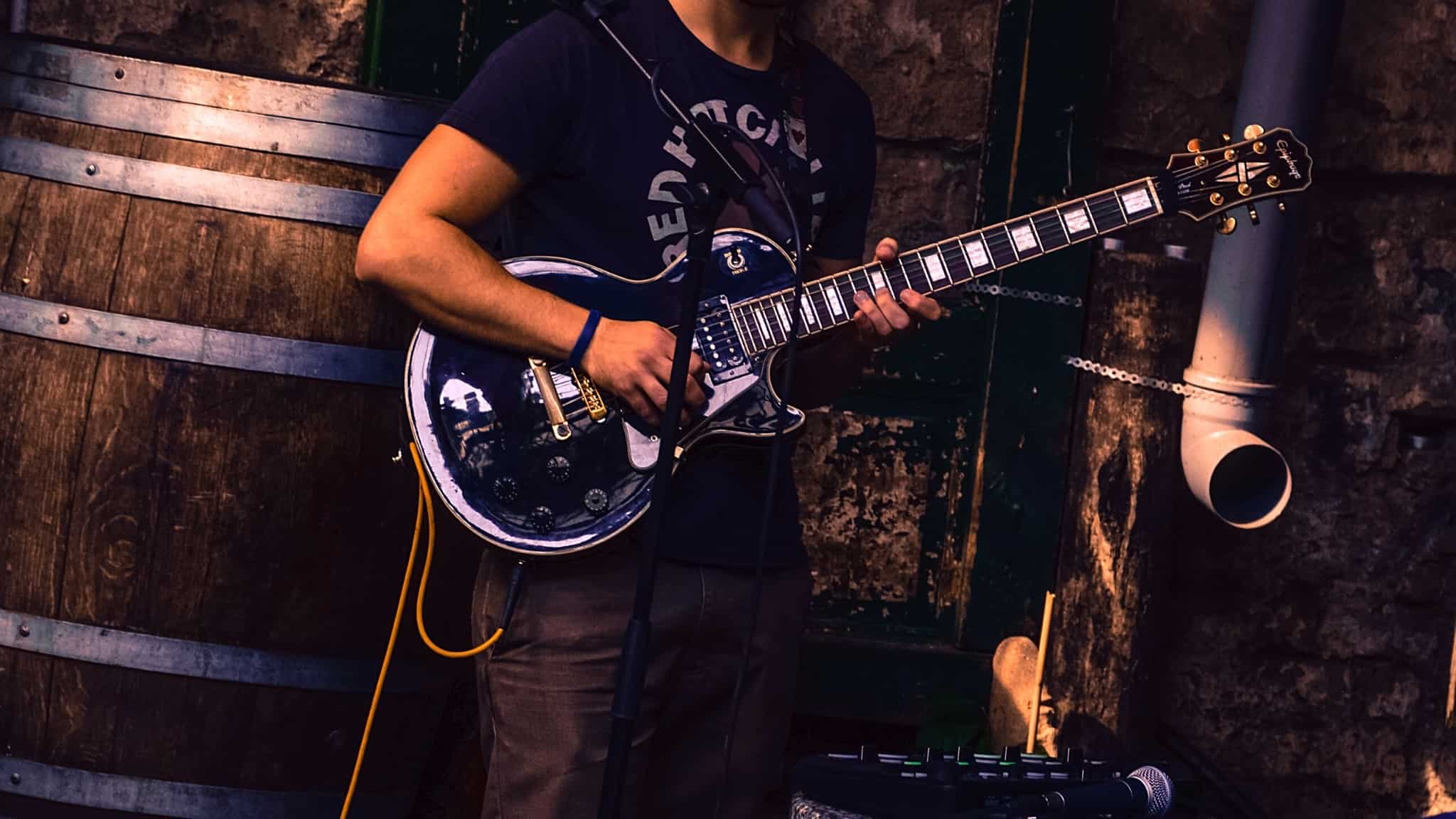
This type of wood is one of the most inexpensive materials for electric guitars. You’ll mostly see this wood on budget or midrange guitars, although some signature guitar makers still use it too.
It’s very simple to work with during the manufacturing process because it’s easy to cut and sand. The reason is that basswood is considered a softwood with tight grains.
When it comes to the sound, it softens the highs and levels out any thin tinny sounds you usually get when playing tremolo contacts.
Another advantage of basswood is that it gives a weaker low end because it has a low mass. So if you’re a beginner and intermediate guitarist playing mostly midrange, then this is ideal.
One of the disadvantages of basswood is that it doesn’t resonate with deep sub-lows.
As a result of the reduction in outer frequencies, it leaves pronounced mids within that response curve. So you don’t get much in the way of low end.
Players appreciate the full-bodied sound of basswood and the overall strong fundamental tone.
Popular basswood guitar model: Epiphone Les Paul Special-II

Best for (blues-rock) soloing: Mahogany

Mahogany is by far one of the most widely used electric guitar woods because it gives those sought-after warm tones.
It’s very aesthetically attractive and makes for some beautiful instruments. This wood is very resonant, which means the player can feel the vibrations as they play.
In addition, this wood is durable and resilient to rot. Therefore, the guitar will last for many years without warping or deforming.
For decades, mahogany has been a staple tonewood for both acoustic and electric guitars.
But one of the main reasons manufacturers and players prefer mahogany guitar bodies is that this wood is affordable and easy to work with. So you can find cheaper mahogany guitars that have excellent tone.
Many guitar bodies are made out of a combination of mahogany and maple, which gives a more balanced tone. It has a tawny, sharp sound and parlor tone, which results in a less brilliant midrange tone.
Mahogany guitars have a distinctive sound, and even though they’re not as loud, they offer a lot of warmth and clarity.
The only disadvantage is that this wood doesn’t offer many lows. But that’s not a deal-breaker for most guitarists.
Guitarists appreciate mahogany tonewood because it’s great for soloing since it has a great balance of overtones and undertones, perfect for higher registers. The high notes are richer and thicker compared to some other woods like alder.
Popular mahogany guitar model: Gibson Les Paul Jr.
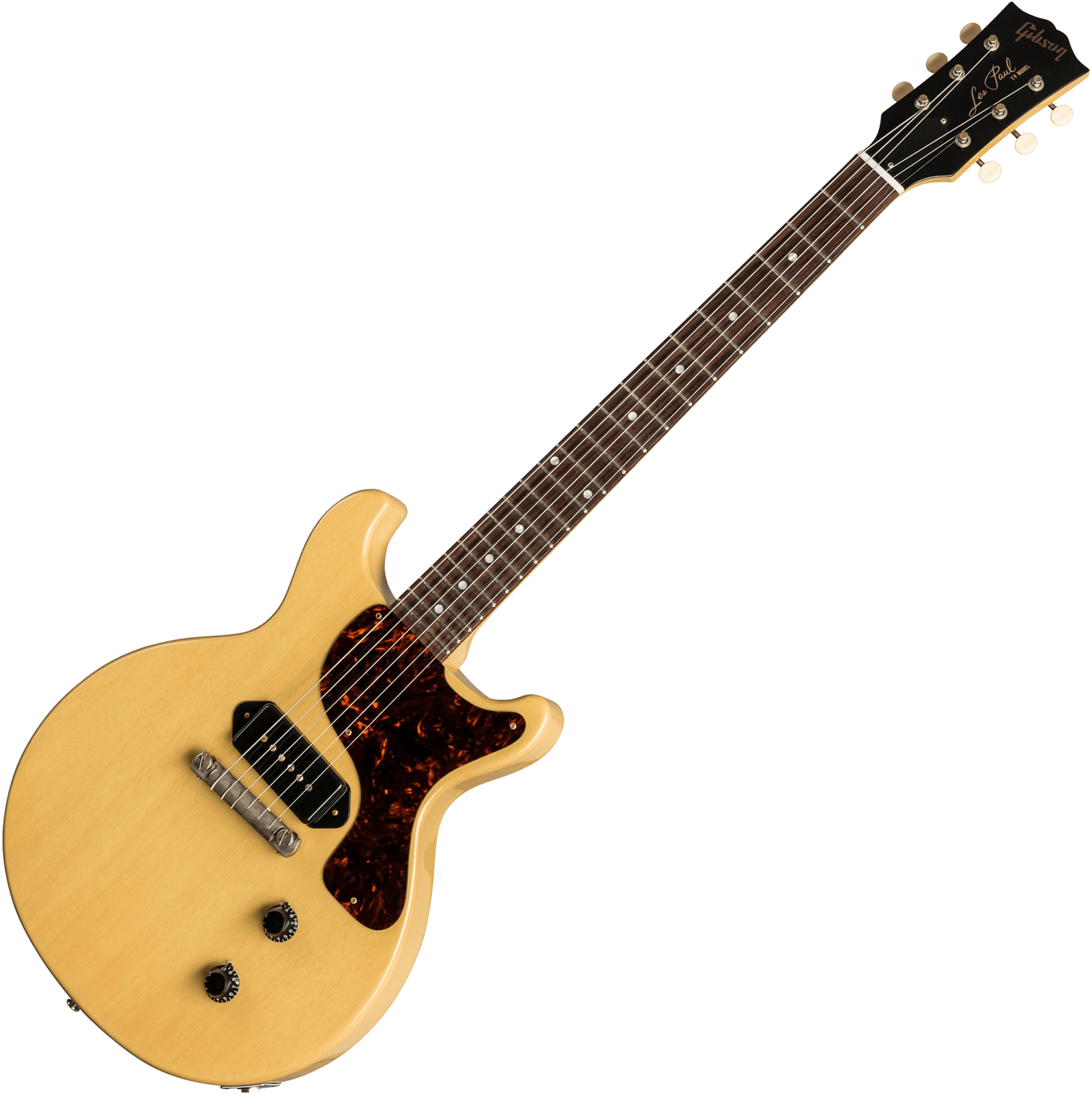
Tight sound for rock and metal: Maple
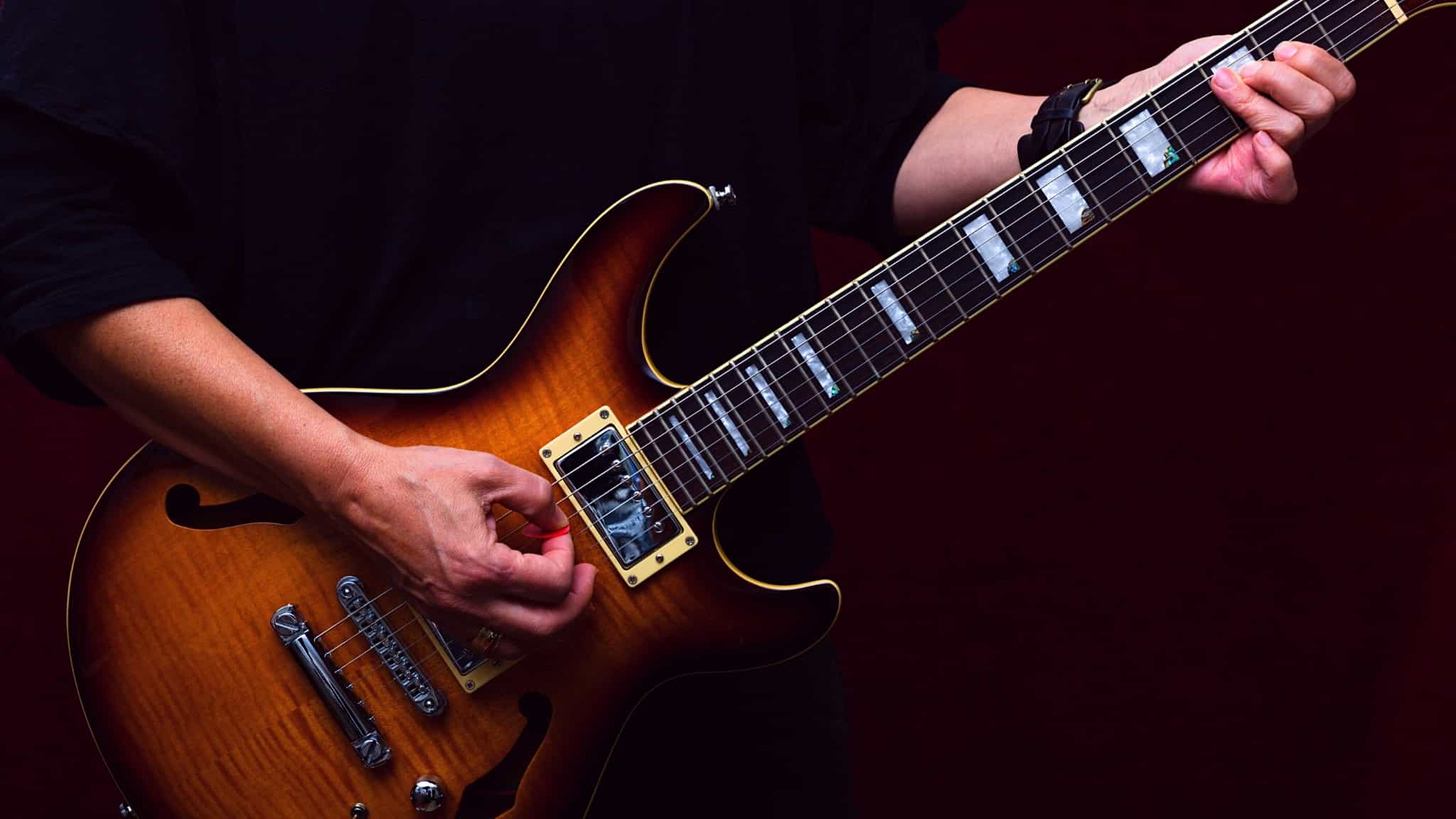
Maple is a common wood with 2 varieties: hard and soft.
Mostly hard maple is used for the guitar neck because it’s a bit too hard for the body. As a body wood, it gives a bright tone, resulting from the wood’s hardness.
Many guitar makers use maple when building multi-wood bodies (such as those with basswood) to give the guitar more bite and less warmth. As well, maple gives a lot of sustain and can have somewhat of an aggressive bite to it.
Soft maple, on the other hand, is lighter in tone. It’s also lighter in weight.
Since maple bodies have that extra bite, these maple guitars are the best choice for playing hard rock and metal.
Players appreciate maple for the strong upper midrange, as well as the bright highs it gives. The lows are also very tight.
Many players say that maple has terrific strength and the sound “yells” out at you.
Popular maple guitar: Epiphone Riviera Custom P93
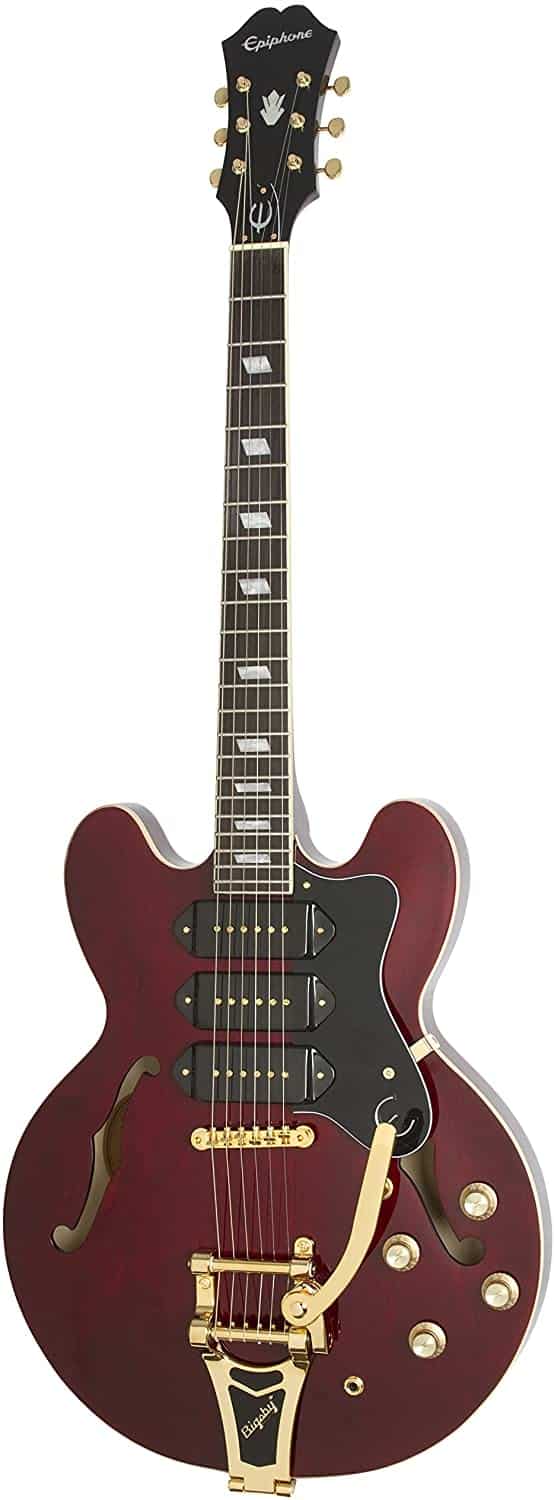
Warm fretboard wood: Rosewood
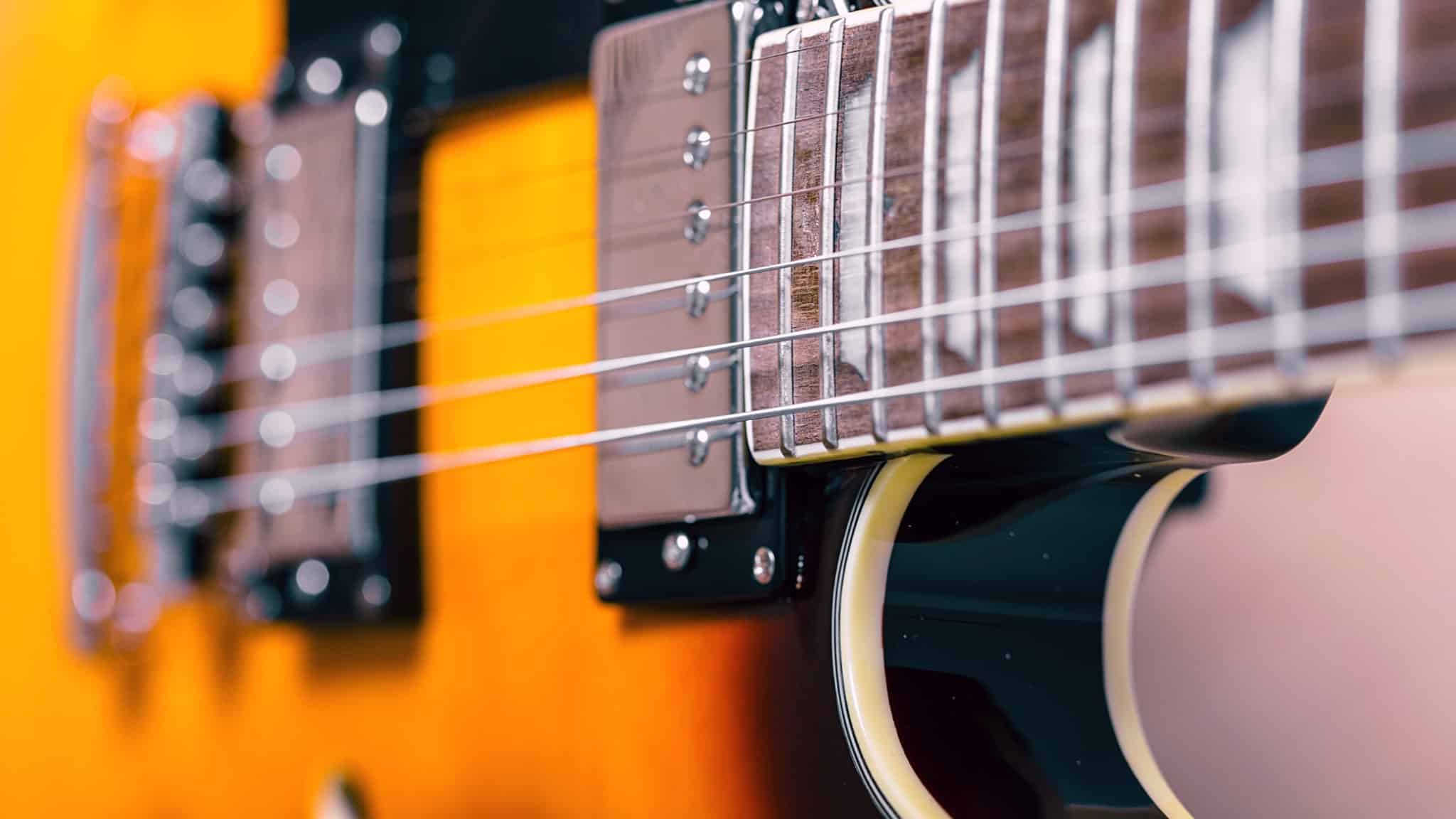
This type of wood is commonly used for fretboards because those require very durable and long-lasting wood.
Rosewood has rich purple and brown colors, making it one of the most aesthetically pleasing woods out there. It’s also very expensive and hard to find.
The scarcity makes this wood highly coveted. Rosewood, especially the Brazilian variety, is a vulnerable species. Trade is limited, so guitar manufacturers must find alternatives, such as Richlite.
Rosewood is porous, and the pores must be filled in before they finish the guitar with lacquer. This porosity creates warm tones.
As well, the guitars make brilliant, heavy sounds. In fact, rosewood makes overly-bright sounds and is a very heavy instrument.
Players like rosewood because it creates very warm and resonant sounds. It can attenuate the guitar’s brightness, but it has this chimey quality to it, so it’s unique.
Popular rosewood guitar: Fender Eric Johnson Rosewood

Most treble: Walnut
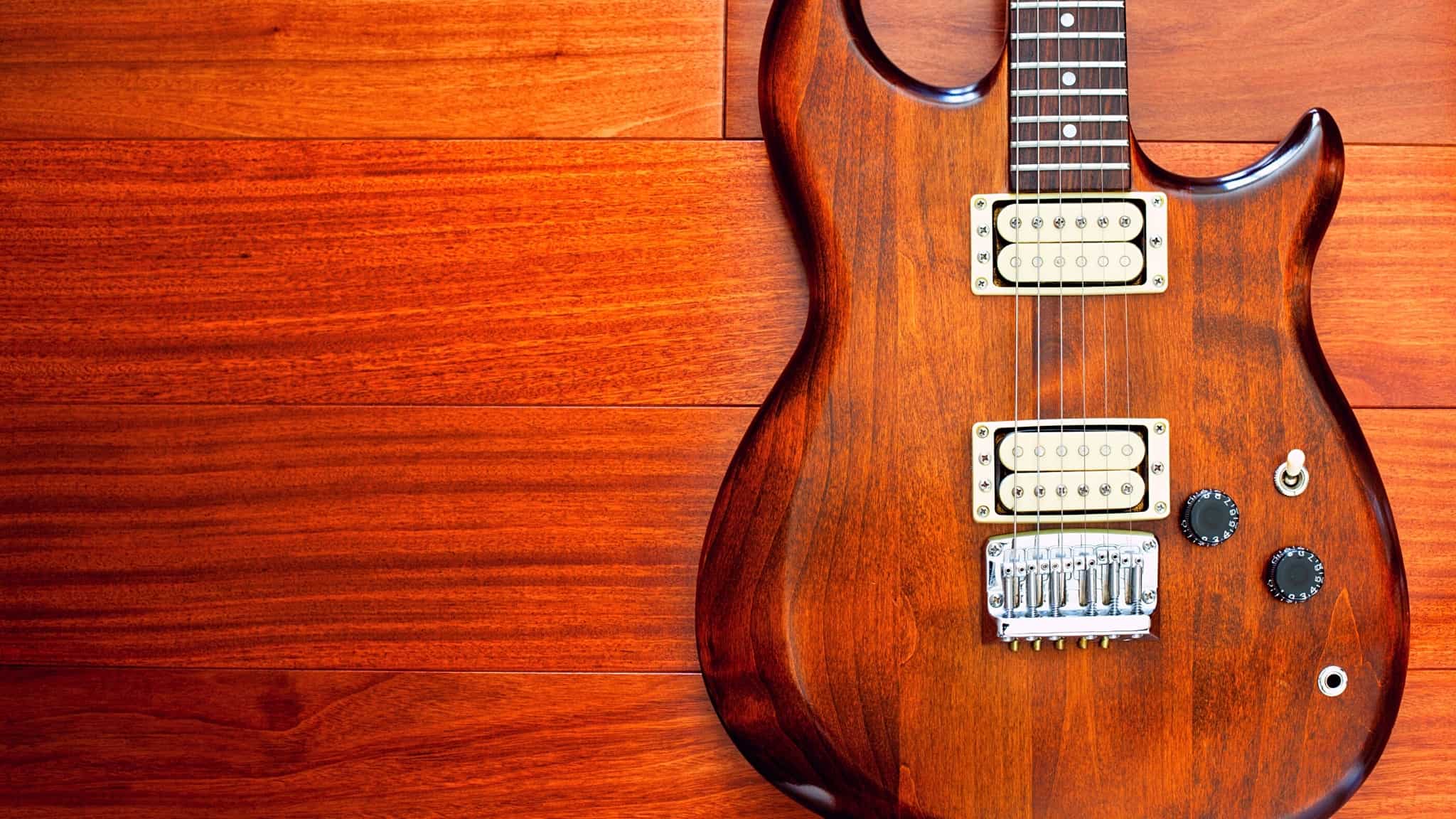
Walnut is a dense and heavy wood. It’s aesthetically beautiful and makes the instrument look appealing.
Walnut has a rich dark brown color and a fairly even grain pattern. Usually, luthiers opt for a simple coat of lacquer to allow the color to come through.
In terms of tonal characteristics, it’s most similar to mahogany. Be prepared for bright treble notes.
Compared to mahogany, however, it has slightly less warmth. But it’s full and has enough warmth, as well as a firmer low end.
Although this tonewood is less popular than the others, it’s known for great attack and a great midrange. The mids are more pronounced and offer good depth and overtones.
Players like this tonewood’s snappy attack, as well as the smooth-sounding highs and solid lows.
Popular walnut guitar: 1982-3 Fender “The Strat” Walnut
Balanced guitar tone: Koa
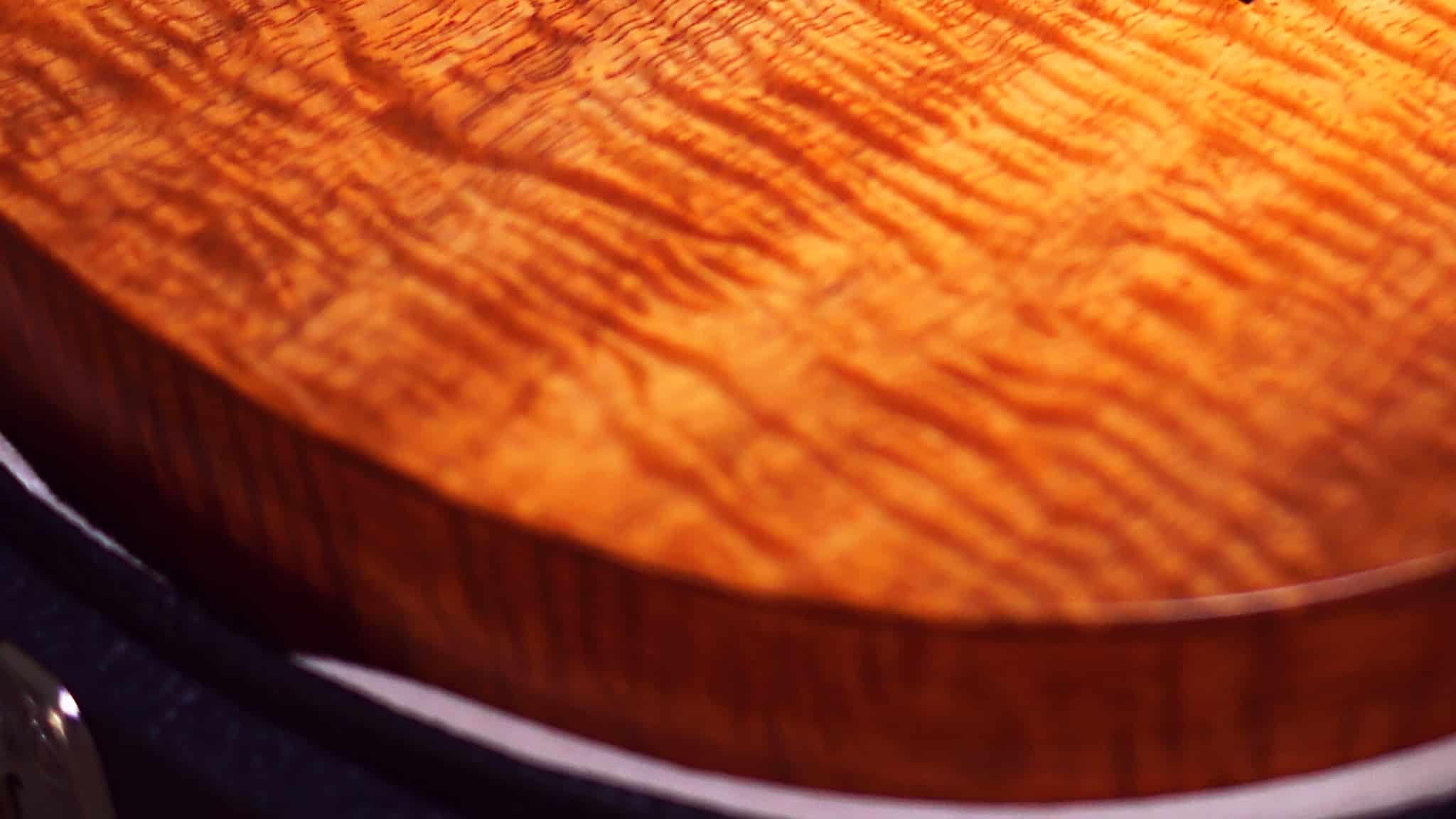
Koa is a strong grain wood from Hawaii that comes in several golden hues, some lighter and some darker.
It’s one of the most stunning woods for electric guitars. It’s more expensive than many other tonewoods, so most players buy koa guitars as an upgrade.
The wood creates a warm and well-balanced sound. You can say that it’s one of the best woods if you want a balanced guitar.
These guitars make mid-range sounds. Koa wood guitars are ideal for guitarists who want expressive tones necessary for music genres that require hard picking, like blues.
If you prefer fundamental and musical sounds, koa is great for that too. The tones are omnipresent.
Koa tonewood isn’t so great for the highs, as it tends to dampen or soften them in the attack.
Players like this type of tonewood when they want to play expressive sounds for blues, like with these guitars.
Popular koa guitar: Gibson Les Paul Koa
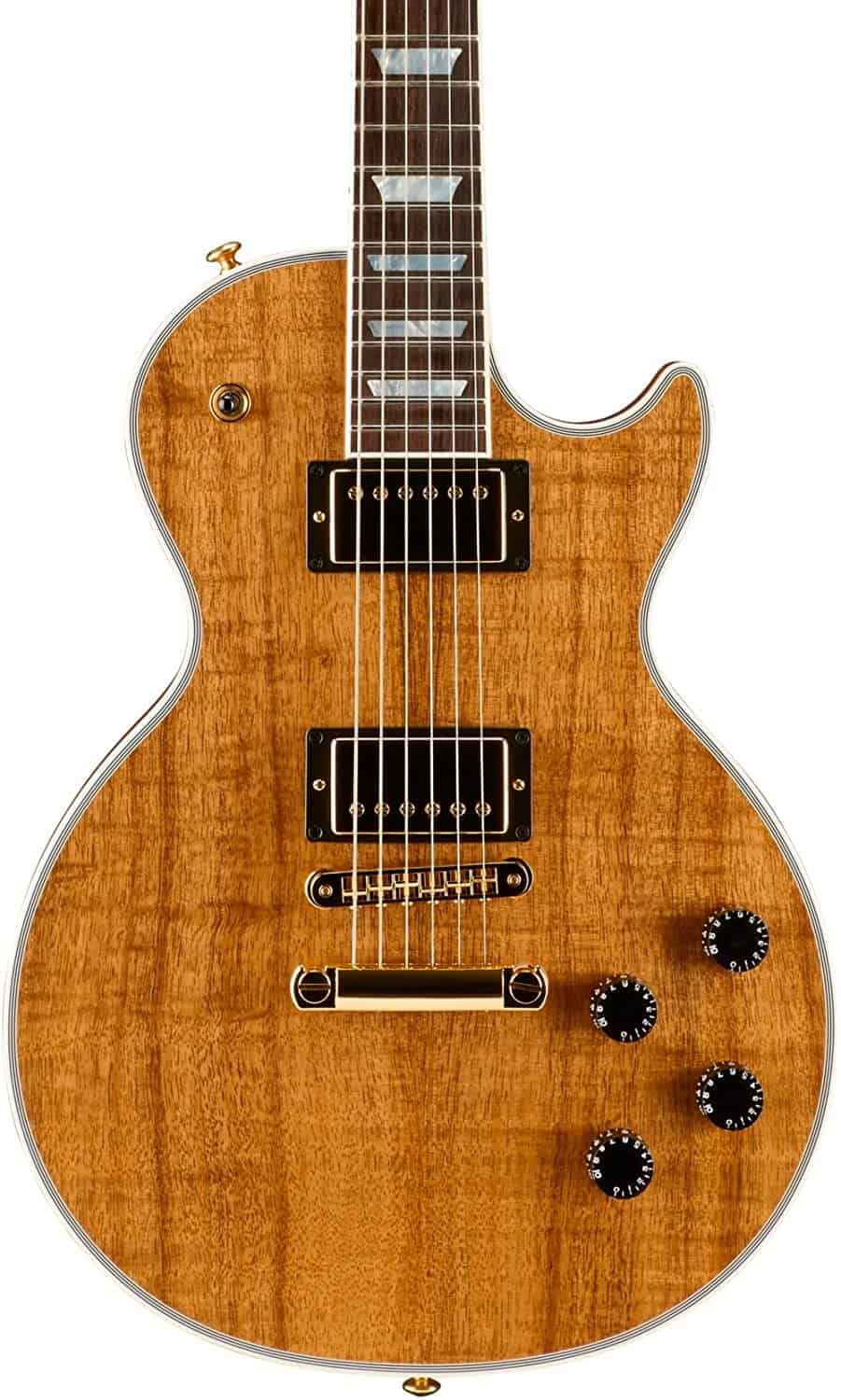
Best resonance: Korina
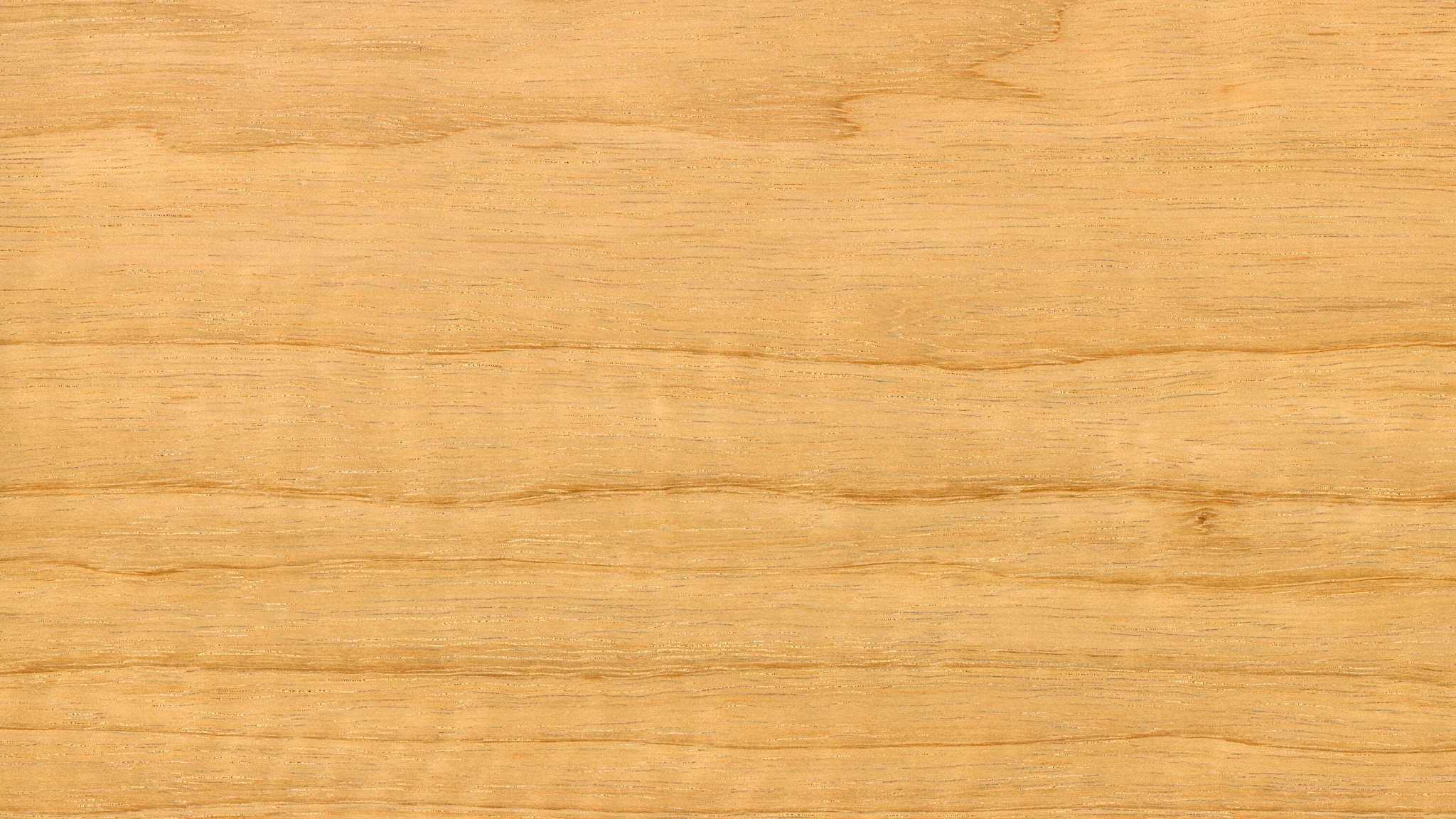
Korina is a species of tree that comes from Africa and is similar to mahogany. But it’s considered an upgrade.
It’s best known as the tonewood of the late ’50s Gibson Modernistic Series Flying V and Explorer.
Korina is a hardwood, but it’s light and has a fine grain. Usually, they enhance the grains during the finishing process to make the thin streaks more visible, as it makes the guitars more attractive.
Instruments made from Korina wood have a warm and resonant tone. Overall, they’re considered balanced in terms of performance so that players can use them for several music genres.
They offer lots of clarity and sustain, as well as some pretty good definition.
Players like Korina tonewood because it has a sweeter midrange, and it’s overall a very responsive wood.
Popular Korina guitar model: Gibson Modernistic Series Explorer
Also read: Best guitars for beginners: discover 13 affordable electrics and acoustics.
Best neck woods
Most often, the neck woods are a pairing of 2 types of wood that sound well together. Here are the most popular combos.
Mahogany
Mahogany makes a stable guitar neck. It has an even density, which reduces any risk of warping.
Since this wood has open pores, the neck is more responsive and less dense than something like maple. As well, mahogany absorbs more of the string vibration (and the right choice of strings helps too!), which then compresses the highs a bit.
Gibson guitars are made of mahogany wood, and they’re excellent for playing warmer and fatter guitar tones.
Mahogany + ebony
An ebony fretboard complements the mahogany neck because it brings more clarity and tightness. It also gives snappy highs and some controlled bass.
An ebony back also adds additional warmth. But a key advantage is that ebony is strong and durable, and wears well, even after many years of finger and string pressure.
Maple
The maple neck is the most popular and common neck for solid-body guitars. It’s a bright neck choice, and it’s less overpronounced compared to other woods.
The solid maple neck is known for its tightness. It has an edgy sizzle in the highs, but also firm lows.
When played with light or medium picking, this wood offers exceptional clarity. With hard picking, the mids have a snappy tone and attack. Be prepared for a subtle yet gnarly edge.
Maple + rosewood
A maple neck with a rosewood fretboard is a common pairing.
The rosewood makes the maple neck’s tone warmer and a bit sweeter. The mids have more openness while there are looser and thicker lows.
In general, players usually opt for the maple and rosewood combo for aesthetic reasons. But the woods also fur up the sounds, and many people like this characteristic.
Cheap vs. expensive tonewood
Now, as you’ve seen, there are many popular tonewoods, and some are far more expensive than others.
The price of electric guitars is determined by the brand, material, and most importantly, the build.
Some woods are scarcer than others, and some are much harder to work with in terms of manufacturing. That’s why when your guitar is made of certain woods, it’s much more expensive.
Generally, the cheapest electric guitar woods are alder, basswood, and mahogany. These woods are readily available for a relatively low price. They’re also easy to work with during the building process, so they’re sold for a lower price.
Rosewood, on the other hand, is hard to find and far more pricey.
As far as tone and sound are concerned, the different wood species all have distinct sound characteristics that directly influence the instrument’s tone.
If you choose a guitar with a maple face, it’s more expensive than a simple basswood one. Maple is known for having a very precise tone, so you’re paying for a distinguished sound.
But the question remains: What do you lose with cheaper wood?
Expensive guitars indeed offer superior sound. But the difference is less pronounced than you’d think!
So the truth is, you don’t lose too much with cheaper wood.
The wood that your electric guitar is made of doesn’t have an obviously noticeable effect on the instrument’s tone or sound. Mostly, with cheaper woods, you lose aesthetic appeal and durability.
In general, the wood in electric guitars has less of an effect on the sound than the wood in acoustic guitars.
Brands & wood choice
Let’s take a look at some popular guitar brands and their choice of wood.
When it comes to tonewoods, you have many options. But each player knows the type of sound and tone they’re looking for.
Many brands offer instruments made from a variety of wood species to suit everyone’s needs. For example, some players look for those sizzling highs, so they might choose a Fender.
Why do some brands prefer certain woods over others. Is it because of sound?
Let’s look at the 3 most popular guitar makers in the world.
Fender
The Fender Stratocaster is probably the most iconic electric guitar, known for those rock and heavy metal tones.
Since 1956, most Fender electric guitars have alder bodies. Fender also uses this wood for the neck in maple guitars too.
The Fender guitars have good bite in their sounds.
Gibson
Gibson Les Paul guitars have maple necks and mahogany bodies. The mahogany body makes the guitar quite heavy, but what makes the Les Paul models stand out is their harmonically-rich tones.
The brand uses mahogany and maple (usually) to give their instruments that thick, gnarly sound that transcends any single musical style.
Epiphone
This brand has a variety of affordable electric guitars. But they have really high build quality, so many players love this brand.
Since it’s a subsidiary brand of Gibson, the guitars are often made of mahogany. The cheapest models are made of poplar, which has similar tonal qualities to mahogany and offers a deep rich sound. It’s similar to Les Pauls, although not quite up there.
Bottom line: Electric guitar tonewood matters
When you decide to pick up a new electric guitar, you need to think about the sound you want from it.
The tonewood influences the instrument’s overall sound, so before you decide, think about what musical style you like to play most. Then, look at all the tonal nuances of each wood, and I’m certain you’ll find an electric guitar to fit your budget and your needs!
Going the secondhand route for buying an electric guitar? Then read 5 tips you need when buying a used guitar.
I'm Joost Nusselder, the founder of Neaera and a content marketer, dad, and love trying out new equipment with guitar at the heart of my passion, and together with my team, I've been creating in-depth blog articles since 2020 to help loyal readers with recording and guitar tips.

